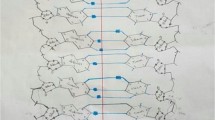Abstract
The physical and social image of the scientist among school children, student teachers, and teachers over the last 50 years was investigated. Interest has also been shown in the perception of the personality behind the physical stereotype. Nevertheless, the value judgments of science and scientists and the positive and negative mind–sets attaching to these judgments in our society were less investigated, either in Israel or abroad. In this investigation models given to science and scientists in the classical literature and by some popular science writers were investigated, together with contemporary learners’ views. The populations consist of 125 high school students from Israel. Several tools were used during this investigation to decipher the images of science: Closed questionnaire, writing an essay, and semistructured collective interviews. Classical authors have pessimistic views about science and the scientists. Most models are unfavorable, and criticize the scientists: The mad and monstrous scientist (Frankenstein), the scientist who is alienated from human life (The Physicists), the scientist who is cut off from reality, the “geek” (Gulliver’s Travels), the scientist whose irresponsible research is harmful to the environment (Jurassic Park), the scientist who hungers for knowledge at any cost (Faust). The positive images found especially in the popular science literature: the scientist who cures diseases (Microbe Hunters), the scientist who has professional integrity (Galaxies), the scientist who keeps to the rules of the scientific method to obtain objective results (Wrinkles in Time).
We found that some expressions relating to fear of science which have appeared in the classics since the beginning of the 18th century were found in a similar way with students of the 21st century, while others expressed that same fear in different ways. There was also an identification with Swift’s “unsociable and unemotional” scientists. Alongside the existence of expressions of fear of science, and mainly ambivalent opinions of students toward science, the dominant picture that stands out in this study is that our contemporary students are pro science, and regard science as a useful area of society.
Similar content being viewed by others
References
American Association for the Advancement of Science. (1993). Benchmarks for science literacy. New York, NY: Oxford University Press.
Anderson, I.K. (2006). The relevance of science education: As seen by pupils in Ghanaian junior secondary schools. Unpublished doctoral dissertation, University of the Western Cape, Department of Mathematics and Science Education.
Beardslee D.C., O’Dowd D.D. (1961) The college student image of scientist. Science 133: 997–1001
Campbell C.S. (2003) Biotechnology and the fear of Frankenstein. Cambridge Quarterly of Healthcare Ethics 12: 342–352
Crichton M. (1993) Jurassic Park. Random House, New York, NY
De Kruif P. (1926) Microbe hunters. Harcourt, Brace & Co., New York
Durrenmatt F. (1988) The physicists. Random House, New York
Finson K.D. (2003). Applicability of the DAST–C to the images of scientists drawn by students of different racial groups. Journal of Elementary Science Education, 15(1), Spring, 15–27
Fung Y.Y.H. (2002) A comparative study of primary and secondary school students’ images of scientists. Research in Science & Technological Education 20(2): 199–213
Goethe, J.W. (1995). Faust. Berlin: Gretchenverlag. (Original work published in 1818)
Haynes R.S. (1994) From Faust to Strangelove. The Johns Hopkins Press, London, UK
Koren P., Bar V. (2007) How student teachers in a religious college perceive and classify inanimnate objects as “alive.”. Dapim – Journal for Studies and Research in Education 45: 140–169 (In Hebrew)
Koren, P. & Bar, V. (in press). Students’ image of ‘The scientist’ among two communities in Israel: A comparative study. International Journal of science education.
Lederman N.G., Wade P.D., Bell R.L. (1998) Assessing understanding of the nature of science: A historical perspective. In: McComas W.(eds) The nature of science and science education.. Rationals and strategies. Kluwer Academic Publishers, Dordrecht, NL, pp 331–350
Mead M., Metraux R. (1957) Image of the scientist among high–school students: Pilot study. Science 126: 384–390
Mbajiorgu N.M., Iloputaife E.C. (2001) Combating stereotypes of the scientist among pre–service teachers in Nigeria. Research in Science and Technological Education 19(1): 55–67
Nussbaum J., Novick S. (1982) Alternative frameworks, conceptual conflict and accommodation: Toward a principled teaching strategy. Instructional Science 11(3): 183–200
Putnam H. (2002) The collapse of the fact/value dichotomy. Harvard University Press, Cambridge, MA
Rampal A. (1992) Images of science and scientists: A study of school teachers views. Characteristics of scientists. Science Education 76(4): 415–436
Sagan C. (1995) The demon haunted world: Science as a candle in the dark. Random House, New York, NY
Shelley M. (1818) Frankenstein or the modern Prometheus. Lackington, Hughes, Harding, Mavor & Jones, London, UK
Shapley H. (1967) Galaxies. Harvard University Press, New York, NY
Sjøberg, S. (2002). Science for the children? Department of Teacher Education and School Department, University of Oslo.
Smoot G. (1995) Wrinkles in time. Abacus, London, UK
Song J., Kim K.S. (1999) How Korean students see scientists: The images of the scientist. International Journal of Science Education 21(9): 957–977
Spielberg, S. (Director). (1993). Jurassic Park (videorecording). Los Angeles, CA.
Spitulnik M.W., Stratford S., & Krajcik J., Soloway E. (1998) Using technology to support students’ artifact construction in science. In: Fraser B.J., Tobin K.G.(eds) International handbook of science education.. Kluwer Academic Publishers, London, UK, pp 363–381
Stevenson R.L. (2001) Dr. Jekyll and Mr. Hyde. Heinemann, Oxford, UK (Original Work published in 1886)
Swift J. (1998) Gulliver’s travels. Oxford University Press, Oxford, UK (Original work published 1726)
Stefánsson, K.K. (2006). ‘I just don’t think it’s me’: A study on the willingness of Icelandic learners to engage in science related issues. Unpublished masters thesis, University of Oslo, Faculty of Education, Department of Teacher Education and School Development, Oslo.
Author information
Authors and Affiliations
Corresponding author
Rights and permissions
About this article
Cite this article
Koren, P., Bar, V. Science and it’s Images – Promise and Threat: From Classic Literature to Contemporary Students’ Images of Science and “The Scientist”. Interchange 40, 141–163 (2009). https://doi.org/10.1007/s10780-009-9088-1
Published:
Issue Date:
DOI: https://doi.org/10.1007/s10780-009-9088-1




